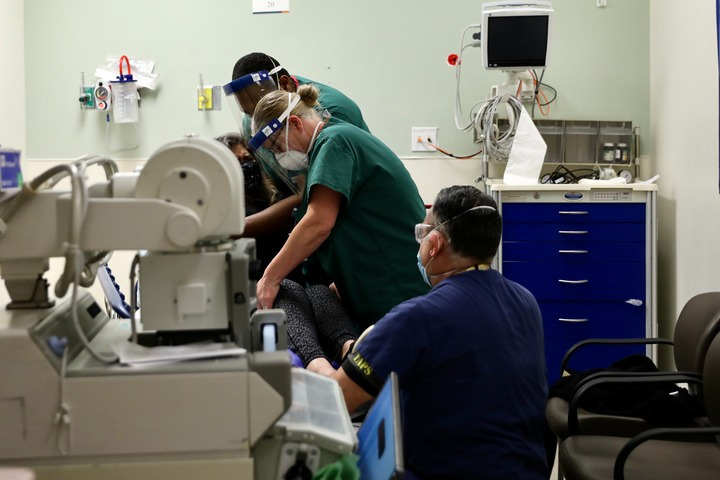According to the Associated Press Rochester on January 24, hundreds of intensive care units in the United States have been in urgent need to receive a record number of patients with COVID-19.
Many of these intensive care units, which are competing to hire travel nurses at high salaries, are concentrated in the South and West.
Analysis of federal hospital data by the Associated Press shows that the proportion of hospitals in the United States that are on the verge of collapse has doubled since November 2020.
Currently, more than 40% of Americans live in areas where intensive care unit beds are in short supply, and only 15% of the beds in intensive care units are available in these areas.
For the most serious patients who face asphyxia or organ failure, the intensive care unit is the last line of defense.
Nurses who work in the most stressful intensive care unit, need to replace infusion bags and monitor ventilator data are exhausted.
The report quoted Dr. Mark Boom, CEO of Houston Methodist Hospital, as saying: “You can’t endlessly add weight to people, right? I mean, it’s impossible.” Many hospital executives, including Boom, are hoping that the number of critically ill patients with COVID-19 will stabilize.
Worryingly, Texas has an average of 20,000 new coronavirus cases every day, and the state has the third largest number of deaths in the United States, with more than 13,000 people hospitalized for COVID-19-related symptoms.
Hospitalization rates remain high in the western and southern U.S., where more than 80,000 COVID-19 patients are currently hospitalized, according to data from the COVID-19 Tracking Project as of Thursday.
According to data from Johns Hopkins University, the cumulative number of confirmed cases in the United States has exceeded 25 million since the outbreak of the epidemic.
The report said that it is encouraging that the curve of hospitalizations in all regions is either stable or on a downward trend.
It is not clear whether the trend of epidemic mitigation can be sustained in the face of vaccination difficulties and the continuous emergence of variant viruses.
In Los Angeles, Cedars-Senay Medical Center lacks oxygen tanks that can bring patients home, which means that some patients who could have returned home occupy much-needed beds because they have to stay in the hospital for a longer time.
But the biggest problem is competing with other hospitals for travel nurses.
Dr. Jeff Smith, chief operating officer at Houston Methodist Hospital, said: “At first, when there was a surge in cases in only one area during the same period, traveling nurses were able to travel to areas with severe outbreaks.
Now, cases are surging across the U.S., with hospitals paying travel nurses two to three times more than they would normally be paying for casually hired travel nurses.
The report also said that Houston Methodist Hospital recently paid its nurses a retention bonus of $8,000 in case they signed up with institutions that may send them to hot spots.
The temptation that travel nurses can get paid up to $6,000 a week may be beneficial to nurses, but for hospital executives who watch nurses leave, it seems to be a kind of digging.
“There are so many such agencies that offer outrageous prices for nurses in intensive care units,” Boom said.
He said: “They went to California, where the number of cases are soaring, from which some intensive care unit nurses are being poached, and then sent them to Texas.
They charge high fees to fill the shortage of medical staff in Texas, many of which are because Texas nurses go to Florida or return.



